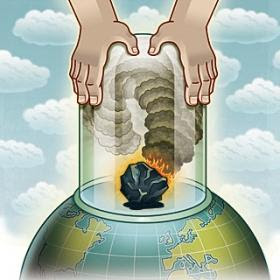Can Captured Carbon Save Coal-Fired Power?

Extracting carbon dioxide from power plant exhaust and storing it underground may be the only hope to avoid a climate change catastrophe caused by burning fossil fuels Like all big coal-fired power plants, the 1,600-mega-watt-capacity Schwarze Pumpe plant in Spremberg, Germany, is undeniably dirty. Yet a small addition to the facility—a tiny boiler that pipes 30 MW worth of steam to local industrial customers—represents a hope for salvation from the global climate-changing consequences of burning fossil fuels. To heat that boiler, the damp, crumbly brown coal known as lignite—which is even more polluting than the harder black anthracite variety—burns in the presence of pure oxygen, releasing as waste both water vapor and that more notorious greenhouse gas, carbon dioxide (CO 2 ). By condensing the water in a simple pipe, Vattenfall, the Swedish utility that owns the power plant, captures and isolates nearly 95 percent of the CO 2 in a 99.7 percent pure form. That CO 2 is then compres
